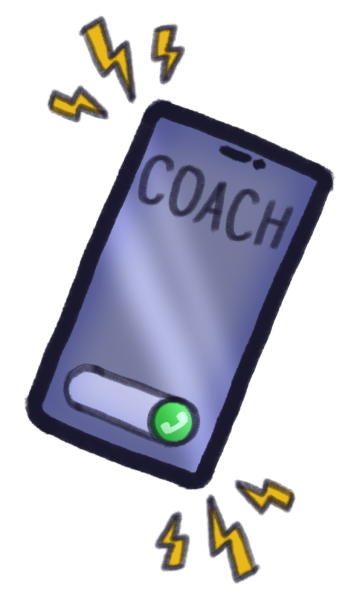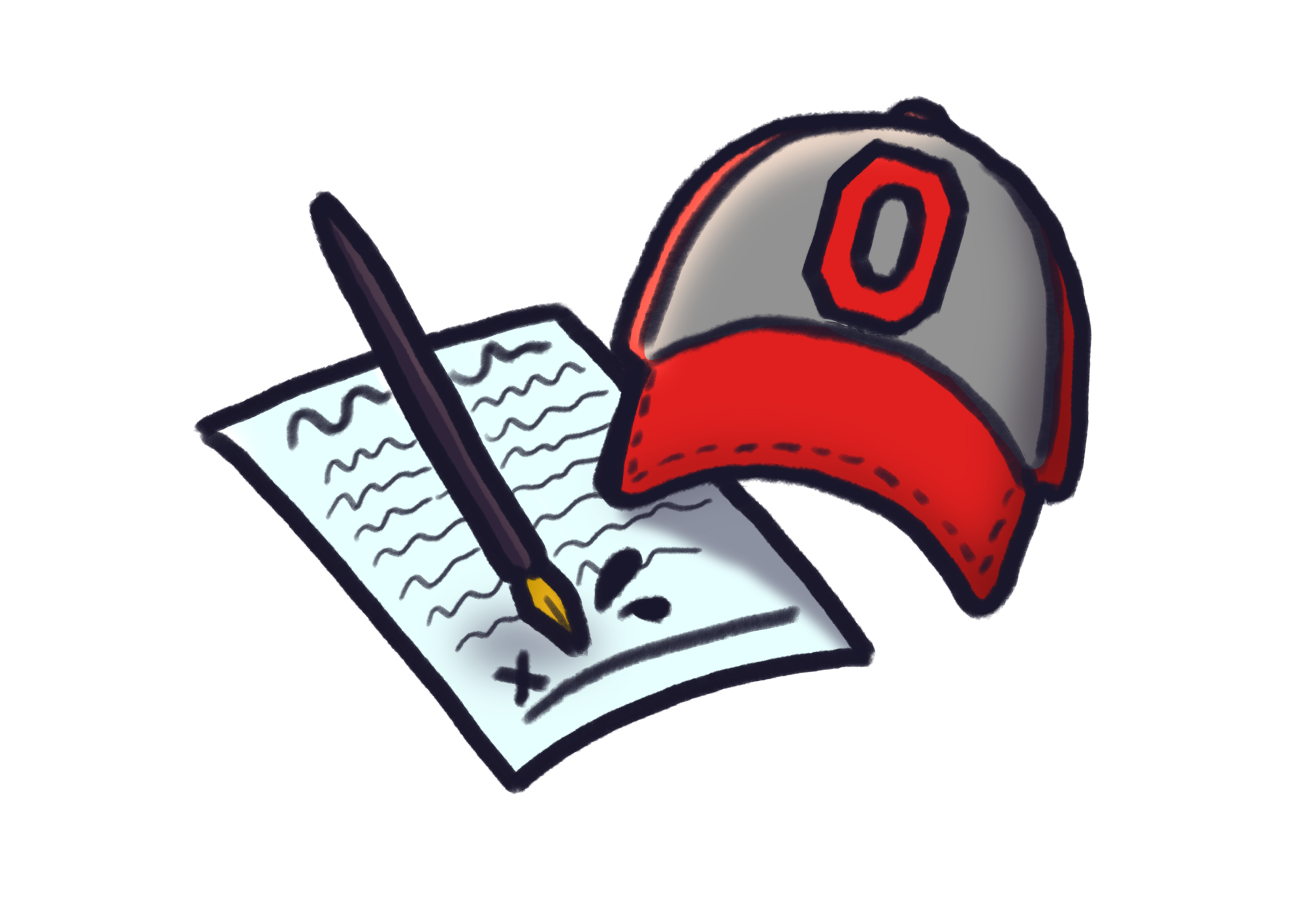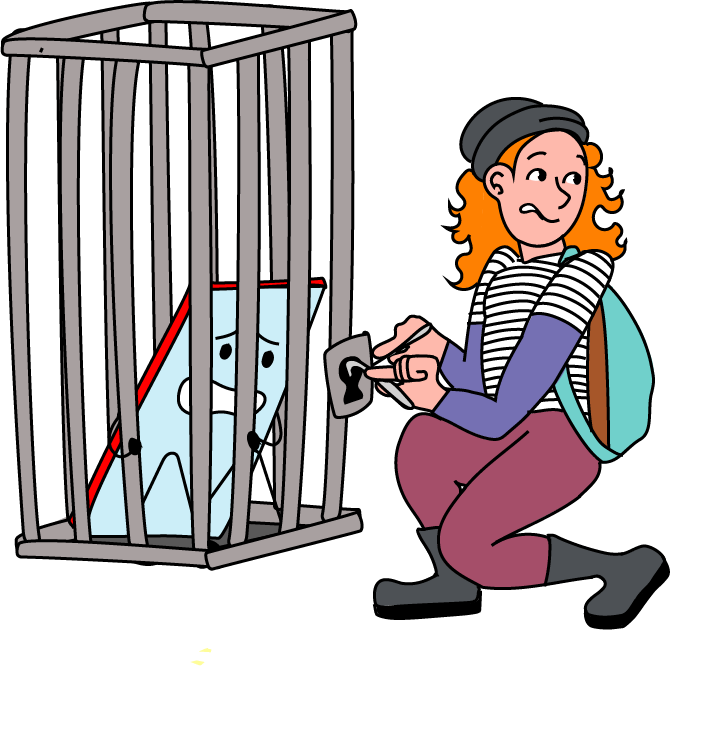About 7% of high school athletes get to participate in college athletics; only 2% ever make it to NCAA Division 1. At Upper Arlington High School, 39 student-athletes have made a commitment to play in college for the 2024-2025 school year.
AMENDING THE PROCESS
The recruiting process looks different for each sport but also for each individual. Soccer players are unable to be in direct contact with D1 college coaches until June 15 going into their junior year, while lacrosse and softball players must wait till Sept. 1 of their junior year to begin direct contact with coaches.
Recruiting rules regarding time have not always existed. Only recently did Division 1 create a mandate forcing coaches to wait for direct two-way contact with players. The rule came about as kids were committing too early and their college process differed from the average student’s.
“[The rule] was hugely beneficial,” Chadwick Blomgren, teacher and soccer coach at UAHS and coach at Ohio Premier soccer club, said. “[Recruiting] becomes too much of a stress and too much of an impact on players to go through that process as a 14-year-old and 15 year-old, when you don’t even know how to drive a car yet.”
Even now, some believe that two-way conversation shouldn’t start till much later in an athlete’s high school career.
“I would make an argument that Jan. 1 of their junior year is a better time, allowing them to grow up a little bit more,” Blomgren said.
THE COLLEGE ROUTE
UAHS alumnus and softball player Audrey Szollosi committed to Harvard in the fall of her junior year. Similar to many student-athletes, her recruiting process began much earlier than Sept. 1 of her junior year.
“A good place to start would probably be my freshman year,” Szollosi said. “I just attended recruitment camps at colleges and drafted a list. It was just 20 colleges that I would be interested in playing at.”
A common tactic among athletes is using their talents to expand the likelihood that they get into a college they might not have viewed themselves as a candidate for academically. Recruiting makes this a possibility.
“Around sophomore summer and junior year, I narrowed down on knowing that I wanted to play softball at a high academic institution,” Szollosi said. “I was just kind of set on using softball as a way to get into a school that I probably wouldn’t have gotten into otherwise.”
Szollosi had a clear goal in mind of where she wanted to commit, yet she had other opinions to worry about. She stayed confident in her choice, and it paid off in the end.
“My [travel] coaches, they were really into Power Five schools. They were not big on sending girls into the Ivy League,” Szollosi said. “I had a lot of people on the staff trying to convince me that ‘The Ivy League is not where you want to go.’ And I’m like ‘No, not really–I want to go to Harvard, I want to go to Yale.’”
Current junior UA girls lacrosse player Brogan Wiles recently committed to Louisville, which has high-level lacrosse and academics. Her process was swift and successful, similar to Szollosi’s.
“The first weeks of September, there’s visits, there’s phone calls,” Wiles said. “It’s a really quick process.”
The phone calls between coaches and athletes signify progress in their recruiting relationship. Coaches aim to get to know the athlete, while the athlete tries to get the insider information on the program and players.
“I had to schedule phone calls,” Szollosi said. “In the calls, they just went over super simple things. They were like ‘Tell me about you. Tell me about your family.’ It was so terrifying.”
The ambiguity of the process can be stressful for some athletes, making it coveted to commit as fast as possible.
“I was to the point in my career where I was like ‘I’m not waiting,’” Szollosi said. “If my number one and number two [schools] are this close to each other and one of them’s offering me right now, I’m tempted to just say yes and be done.”
Despite the desire to commit fast, Szollosi, like many athletes, waited for her dream school to bite. The idea of a dream school can work as motivation for student-athletes, but, as expressed by Brogan Wiles, dream schools can change.
“I didn’t expect to enjoy certain schools as much as I did,” Wiles said. “Part of it is [that] them being interested in you is a lot more appealing than the schools that you’re chasing. It feels nice to be wanted throughout the process.”
Colleges have become reliant on their athletics and athletes to bring popularity and money to their schools. Athletes themselves are eager to obtain scholarships and NIL (Name, Image, and Likeness) deals. Due to the recruiting, frenzy consultants like Next College Student Athlete (NCSA) have made a living off of helping students commit. High school and club coaches, though, can be an athlete’s biggest advantage.
“Ultimately, our job is to help advocate for them,” Blomgren said. “Then help give [players] direction in terms of where you could go, what maybe is a good fit based on how you play. Not necessarily tell you what you have to do but just give you options.”
The competitive nature of getting admitted to college, much more so in athletics, causes some student-athletes stress. Part of a coach’s job is to minimize the stress their players feel as they try to gain an advantage over their recruiting class.
“The biggest thing that we have to work through is just helping kids understand that everyone’s on a different timeline,” Blomgren said. “Some people are going to hear phone calls on June 15, and some of you are going to hear phone calls 18 months later, and all of that is alright.”
TRANSFER PORTAL PROBLEMS

Since the COVID-19 Pandemic, the transfer portal has become a frenzy of athletes seeking greener grass. Many athletes have been using the portal as a way out after utilizing their first college commitment as a stepping stone to the next best place. The impact the portal has had is leaving many future college recruits with fewer options and more competition.
“The transfer portal is a nightmare,” Blomgren said. Athletes who are fresh out of highschool are left to compete with experienced college players and many times–due to COVIDredshirt graduate students.
“It is changing everything with recruiting because now schools feel as though they have to make a decision,” Blomgren said. “They have to decide if they’re going to bring a player in that’s young or bring a player with experience.
There are currently 3,843 players in the transfer portal, in college football alone. The number has increased by a few hundred since the 2022-2023 season. This has been the trend evident in most college sports across the board.
Much of the pressures of the transfer portal is burdened by the college coaches. Blomgren described it as a choice between win now or win later. Coaches now have to choose between long lasting potential in an athlete, which could benefit them in the future, or building a squad that will be successful for a short time.
The toughest aspect of the portal is the increase in competition for a limited number of spots.
“It’s making recruiting frustrating for kids as they are having conversations,” Blomgren said. “Now it’s not just dependent on freshmen or sophomores in their classes that could be going to those schools. It’s now graduate students, or it’s now students at other universities wanting to transfer. It’s just made it more competitive for kids.”
YOUNG PROFESSIONALS
Despite the popularity of continuing one’s sport in college, young athletes have started to discover new paths to play their sport at the next level in order to skip the strains of recruiting. According to Fox Sports, in the summer of 2023, there were six teenagers in the National Women’s Soccer League. Cori “Coco” Gauff was only 15 when she bested Venus Williams at Wimbledon in 2019. Some professional sports are seeing a high influx of teenage athletes, while sports like basketball and football have age requirements to enter the professional leagues.
One of Upper Arlington’s own, senior Giorgio DeLibera, took the professional route as opposed to the college route when he signed a contract with Columbus Crew 2 for the 2024 season.
Similarly, Sophie Khelashvili, a current sophomore at Upper Arlington, has also been looking to expand her options to continue playing soccer at the next level. Last April she spent two weeks in Italy playing with the Georgian National Team getting to know the European soccer landscape.
“It’s something that, outside of my country, I’ve never really done before,” Kelashvili said. “You can meet new players and learn how people in Europe play.”
Academy teams or semi-pro teams offer the opportunity for young players to work their way up the ranks and eventually reach the goal of playing professionally and skipping the college route.
“I believe the professional academy route is better than the college route,” Kelashvili said. “College is only playing [games] for half a year and the rest is just training your athletic ability.”
Because there are few age restrictions in soccer, there are more opportunities for players to go professional earlier rather than spend time at the college level. This practice is more popular in Europe than in America, but American athletics are slowly adopting the idea.
“[My Georgian teammate] plays for a team and gets paid yearly and based on how many minutes she plays,” Kelashvili said. “She is 14 years old, and she’s already a pro.”
Whether college appeals to an athlete or a more direct path to the pros, competition and stress seem to be evident, but the reward makes it worth the struggle for so many student-athletes.
“There’s going to be a lot of ups and downs throughout the process,” Wiles said. “You just got to be able to roll with it.”






